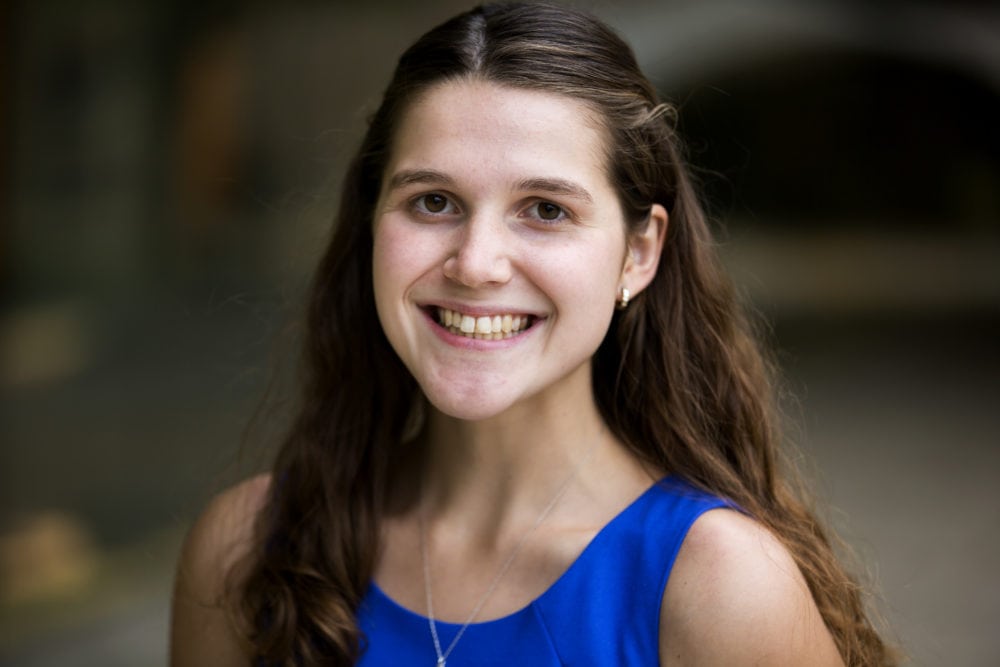
Bright ideas
Master’s student research explores concept generation in design

Master’s student research explores concept generation in design
by Kim Roth
Generating ideas during an engineering design process is crucial to developing successful solutions. But teaching – and learning – about idea generation in design is challenging for instructors and students alike.
Anastasia Ostrowski (BSE BME ’16, MSE BME ’17), has been conducting research with the aim of providing insights to improve idea generation, and therefore design education, for BME students.
Ostrowski’s thesis research began with “a series of questions,” she says: “What do students think about idea generation? How do instructors discuss idea generation in class? How do students approach coming up with ideas, and what influences their choice in approach?”
To begin answering them, she designed a research project looking at BME students’ conceptions of idea generation and how students tackle idea generation during a class design project. Through a series of interviews with students and observations of teams’ idea generation sessions, she came away with some interesting findings.
For one, Ostrowski found misconceptions among students about the definition and importance of idea generation. “We found students tended to lump idea generation together with evaluation and selection activities, treating them all as one design phase when they’re really distinct activities,” she says.
Given the time pressure of a typical one-semester design course, as well as other constraints, it’s not surprising. “Students kind of have to come up with a set number of ideas, pick one, and go,” she adds.
But that’s not to say students are going about the process the “wrong” way, or that professors aren’t teaching the “right” way. Rather, she hopes to identify ways to help students “open up the design space” to explore many concepts before they must engage their inner critics and select one to pursue.
The research, advised by Shanna Daly, assistant professor in mechanical engineering and engineering education, and Aileen Huang-Saad, assistant professor in BME, entrepreneurship, and engineering education, supports upcoming changes to the BME design curriculum. The new curriculum will include specific strategies for facilitating idea generation.
“FOR NOVICE DESIGNERS, IT TAKES A LOT OF TIME TO WORK THROUGH AND GAIN THESE SKILLS,”Ostrowski
For novice designers, it takes a lot of time to work through and gain these skills,” Ostrowski says.
Thesis defense now behind her, Ostrowski is spending the summer on a Whitaker International Fellowship. She’s in Switzerland, where she is conducting ethnographic studies of the BME design process of prosthetics and rehabilitation devices with Professor Silvestro Micera, who directs the Translational Neural Engineering Laboratory at École Polytechnique Fédérale de Lausanne.